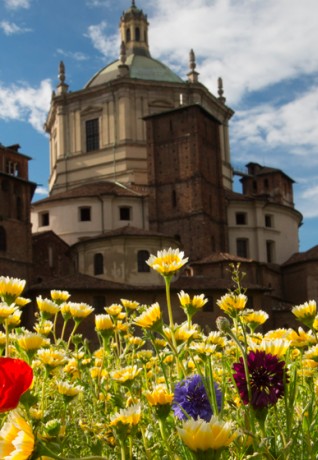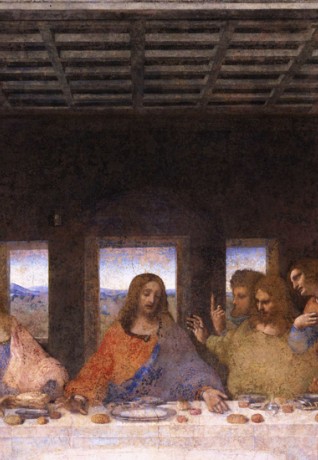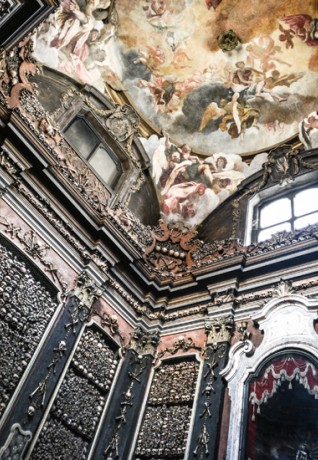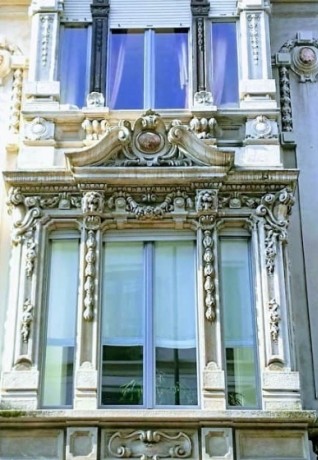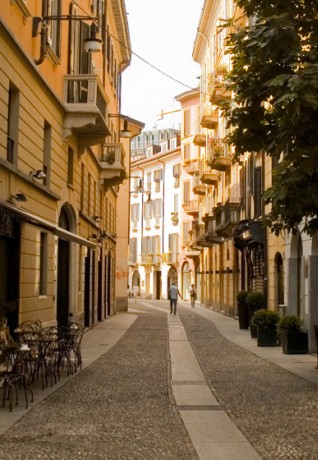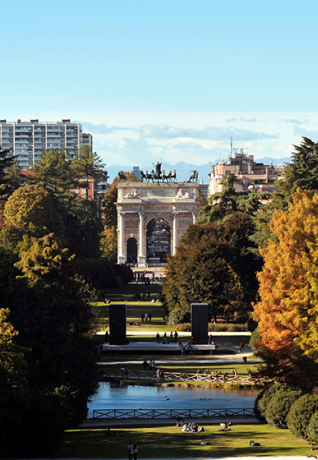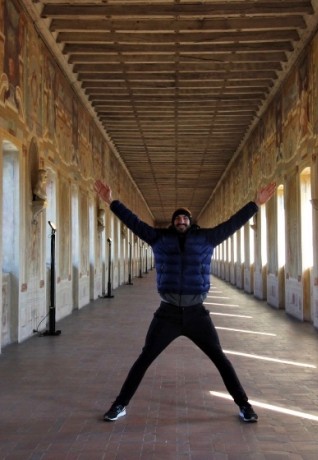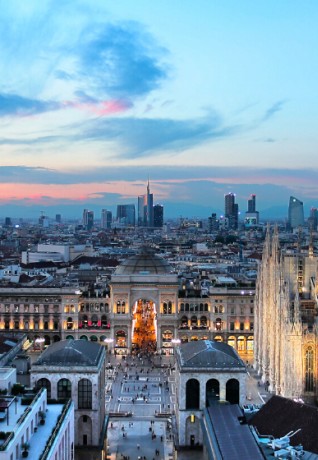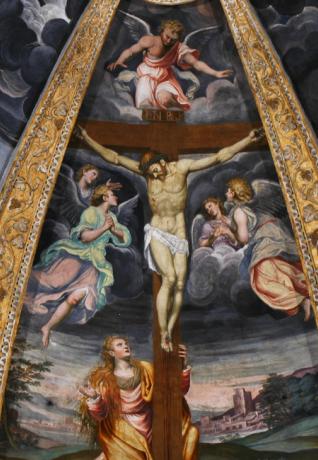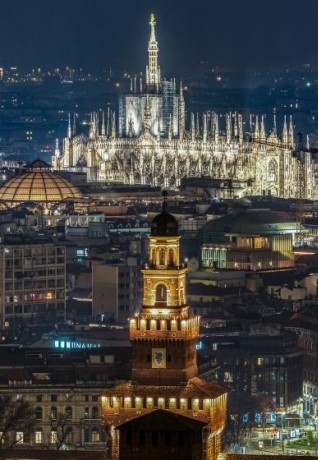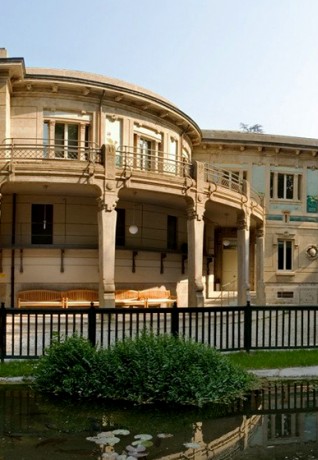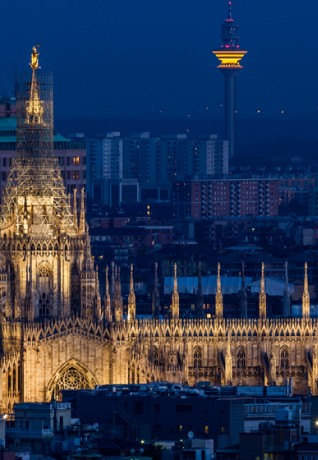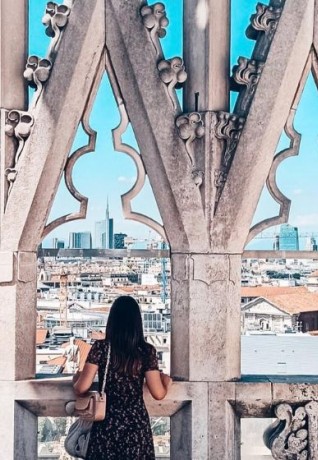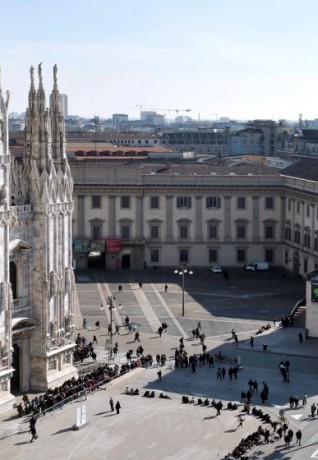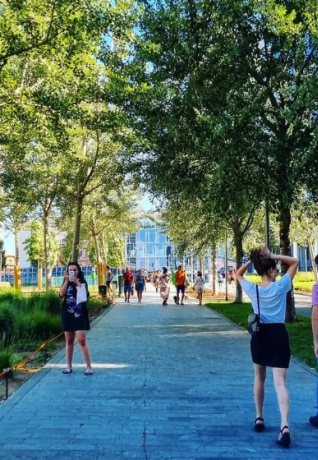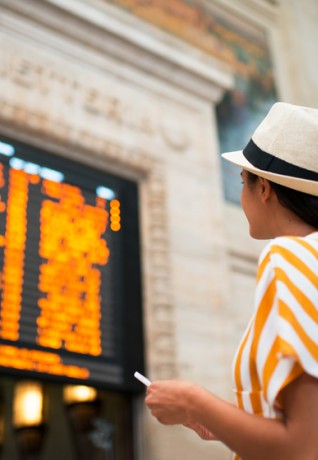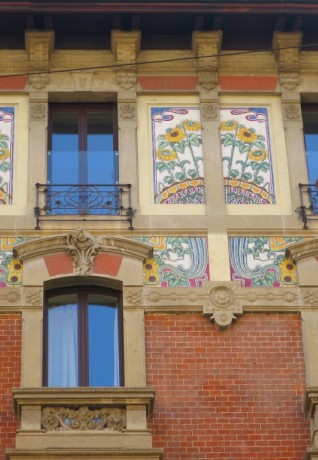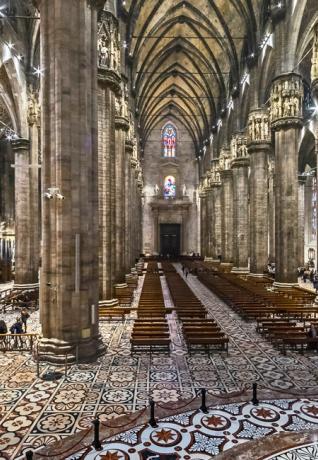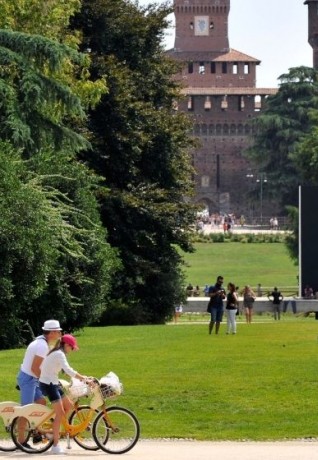Hidden Gems in Milano
Secret places for an unusual city visit
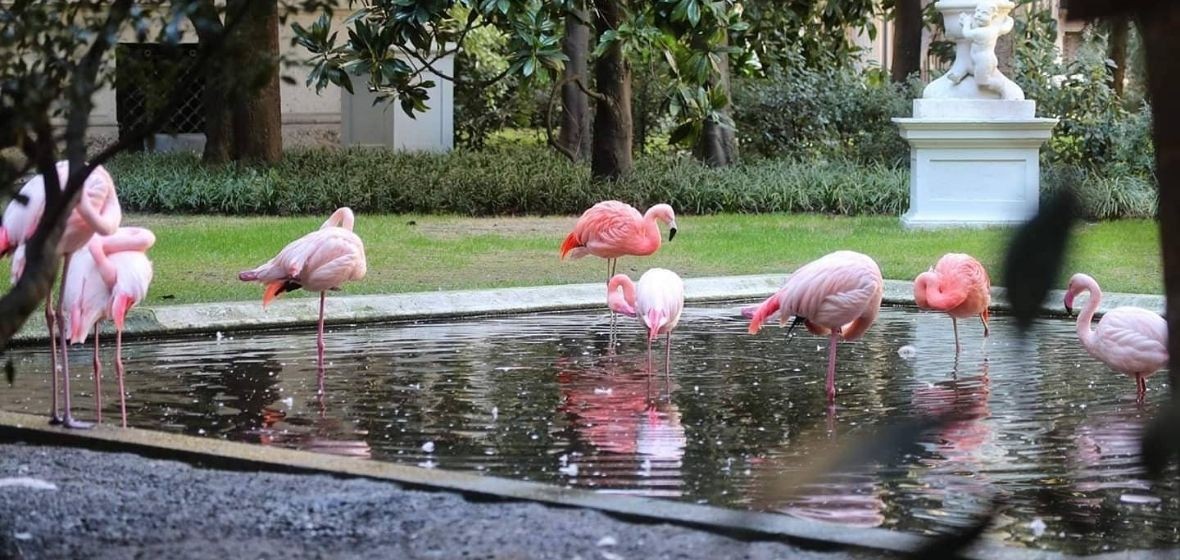
- The first private swimming pool in Milan
- Ca' de l’Oreggia
- The pink flamingos of Villa Invernizzi
- Piazza del Quadrilatero
- "The Dutchman"
- Via Lincoln, the "Burano" of Milano
- The Statue of Liberty in Piazza Duomo
- House of the Omenoni
- Chiesa di San Bernardino alle Ossa and its terrifying ossuary
- The diabolical mysteries of Palazzo Acerbi
- The Devil's Column
- The secret courtyard of Corso Magenta
- The igloo homes of the Maggiolina district
There is a secret Milano. It is located behind the doors of noble palaces, in the most secluded streets, just outside the city centre. Or, right under your eyes, hidden in the shadow of the most famous monuments. Discover Milano’s urban secrets in this itinerary across places that are curious, unusual and full of mystery. Even when you think you have seen it all, Milano still knows how to surprise you.
In intertwar Milano, the gilded world met (and partied) at the home of Nedda and Gigina Necchi and Angelo Campiglio: Villa Necchi Campiglio, today one of the most beautiful house-museums in Milano. In the heart of Quadrilatero del Silenzio (the Silence Quadrangle), a few steps from the M1 Palestro metro stop, the building was designed in the early 1930s by architect Piero Portaluppi, made the headlines for the presence of a private swimming pool in the villa’s garden: it was an absolute first in the city. The villa was equipped with cutting-edge technologies: internal intercoms, sliding armored doors and a virtuous system for the recovery and recycling of water for the swimming pool, garden irrigation, and the heating system.
Discover it all during your visit, along with the rich collection of works of art that adorn the interiors. Then, do as the guests of the Necchi family did: stop by the coffee counter and enjoy the poolside atmosphere.
Be wary about whom you tell a secret, because even walls can have ears. It’s literally true in Milano, where there is a modernist palazzo that has a giant ear at its entrance. In via Serbelloni 10, a few steps from the entrance to Villa Necchi Campiglio, you will notice an ear protruding from the wall, next to the door of Palazzo Sola Busca. It is a bronze intercom (one of the very first in Milano) created by Adolfo Wildt in the 1930s, having such a particular shape that it earned the building the nickname in Milanese dialect of "Ca' de l'Oreggia" (House of the Ear).
If along the road to Villa Necchi Campiglio you have noticed some people peeking through the hedges that hide the facade of Villa Invernizzi, get ready to take a picture: in the private garden, around a pond, lives a colony of pink flamingos.
Another jewel, renamed "piazza del Quadrilatero", is hidden among the luxury shopping streets of Milan: you just have to enter from the Baroque door in Corso Venezia 11. The courtyard of the former Archbishop's Seminary, which once only few had the privilege of frequenting, is now open to the city as a chariming place for strolling (the square connect Corso Venezia to via Sant'Andrea) and for your shopping. Here you can find an hotel, a restaurant and some boutique.
Red brick, long and narrow windows, and three-pointed gables. Some call it "the Dutchman" for the style of architecture reminiscent of Dutch and Flemish cities. In fact, the house in Via Carlo Poerio 35 is one of sixteen 770 houses built identical in various cities around the world. Milano’s is the only one in Europe.
Just over a kilometre is enough to go from the Silence District to the Rainbow District. Another (small) world. You will find yourself in front of low terraced houses, with balconies, palm trees and private gardens. But, above all, with brightly coloured facades. This is Via Lincoln, a narrow private street so colorful that it is known as the "Milanese Burano", like the Venetian island.
Take a tour of the surroundings, and sit at refined cafés and restaurants for the evening. In Corso XXII Marzo you will find the Suffragio market and the mural dedicated to St. Ambrose Apiculturist, one of the latest street artworks created in Milano, a tribute to the industriousness and resilience of the Milanese.
Sometimes the best hidden secrets are right in front of your eyes. Walk downtown and carefully observe the Duomo’s facade, focusing on the statues that decorate it. On the left side of the central gate, there is a sculptured relief that closely resembles the Statue of Liberty. Christened New Law by Camillo Pacetti, it was created in 1810, and it is said to have inspired Frédéric Auguste Bartholdi, who created the world-famous giant statue facing Manhattan.
Did you know that the Barbarians dwell 500 meters from the Duomo and the Teatro alla Scala? There are eight barbarian giants sticking out of facade of Palazzo Leoni-Calchi, in Via degli Omenoni 3, another hidden jewel of Milano.
The imposing Renaissance sculptures of Svevo, Quado, Adiabene, Parto, Sarmata and Marcomanno are named after the main Barbarian tribes of defeated by the Roman Empire. Some see similarities with Michelangelo's Prigioni, and they are not wrong: the Arezzo-born Leone Leoni, owner of the building and promoter of its renovation in 1542 was a sculptor who worked for the Mint of Milano and a great art lover. His collection included Leonardo's Codex Atlanticus which can be now be admired at Biblioteca Ambrosiana.
Walk towards Via Larga, until you reach Piazza Santo Stefano, and be brave: you are about to cross the "Stretta dei morti", today Vicolo di San Bernardino. Go through the gate of the church of San Bernardino alle Ossa and go to the Ossuary. In a small chamber shrouded in dim light, skulls, vertebrae, femurs and ulnas cover the walls and frame the jambs and columns of the chapel.
And on November 2, Day of the Dead, legend has that the little girl whose bones are found at the altar comes back from the dead to drag all the other skeletons into a macabre dance.
The Devil not only wears Milanese shoes, he lives in Milano, too. If you knock on the door of Palazzo Acerbi, in Corso Porta Romana 3 (M3 Missori), who knows if we’ll ever see you again. In fact, the chronicles of 1630 tell that the Devil himself, in the person of aristocrat Ludovico Acerbi, used to live here. The man travelled aboard a carriage pulled by black horses and went on organizing parties and dances while the plague was raging in the streets of Milano. It seemed to affect everyone except him and his guests. So people said he was the devil incarnate…
Among the other oddities of Palazzo Acerbi, is the cannonball set on the facade. It dates back to the battles of the glorious Milanese revolution of 1848, the Cinque Giornate, the five days of city insurrection.
There is another place in Milano where the Devil has left his mark. Outside the Romanesque Basilica of St. Ambrogio (M2 Sant’Ambrogio), a severed stone column has two clearly visible holes in it. According to legend, they are the holes left by the horns of Lucifer, furious that St. Ambrose was resisting his assault. Smell of sulfur and frightening screeches: if you get close to the holes, you will hear the sounds of Hell. Or at least, so they say. Dare you try?
Despite its rather common name, Casa Rossi is anything but conventional. Located in Corso Magenta 12, it is a site of wonder. Enter the inner courtyard (you have to be lucky because it's not always accessible to the public) and look up: the five-storey architecture, designed by pillars, capitals and windows, cuts a perfect octagon shape of the sky. All very eminently instagrammable. Walk ten minutes more and you can reach the Church of Santa Maria delle Grazie and Leonardo’s Last Supper.
The igloo homes designed by the engineer Mario Cavallè represent one of the most curious urban experiments in Milano. They are located in via Lepanto, in the Maggiolina district (M5 Marche or Istria), and were built after the war as temporary housing units, to house families displaced after the bombings of the Second World War. Today, only two houses remained with the original layout, but they continue to attract onlookers and Instagrammers.

 Log in
Log in


